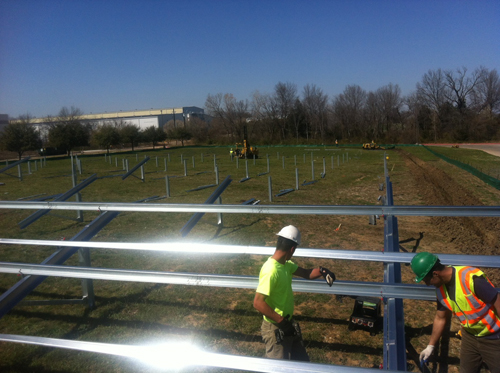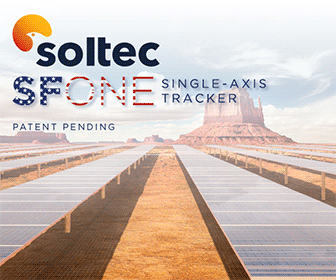Evolving Solar Standards: A look at UL 2703 in terms of quality manufacturing
 Mounting and racking technologies continue to evolve with the goal of reducing costs, as well as improving reliability and ease of installation. Providing long-lasting, cost-effective solutions to common issues is a challenge shared by leading companies in the industry today. Corrosion and wind and snow loads are chief among these challenges, and standards still need to improve to ensure greater reliability.
Mounting and racking technologies continue to evolve with the goal of reducing costs, as well as improving reliability and ease of installation. Providing long-lasting, cost-effective solutions to common issues is a challenge shared by leading companies in the industry today. Corrosion and wind and snow loads are chief among these challenges, and standards still need to improve to ensure greater reliability.
The evolution of UL 2703
Underwriters Laboratories (UL) has been positively impacting the solar industry for many years and, in 2008, it began developing UL 2703 standards and guidelines—the codes that provide a framework for racking manufacturers to work within, ensuring the safety, reliability, and performance of their products.
Today, UL standards are more relevant than ever, as safety requirements are increasingly enforced across the photovoltaic (PV) sector. End-use customers, installation site owners, and financial institutions are becoming more educated about the laws in place to protect their investments.
To remain competitive, racking manufacturers must be compliant with codes. At the same time, manufacturers are under increasing pressure to reduce costs, while maintaining the high-quality structural and mechanical design and performance of the products they offer. As with any growing industry, the PV sector has many different suppliers of varying quality. Although meeting the UL 2703 specification is a mandatory requirement for some customers and jurisdictions, there are several aspects to the specification—such as bonding, corrosion, structural, and fire-rating—that are not all equally enforced.
Essentially, this leaves customers little choice but to rely on product warranties as a guide to the quality of the systems on the market. However, warranties are only as good as the company behind them. And, as large-scale developers making sizeable investments are increasingly focused on product quality and company bankability as part of their vetting process, warranty lengths aren’t necessarily their focus.
Corrosion and UL 2703
Racking companies make material selections early in the design process, and in most cases steel is a natural choice due to its durability, strength, availability, and low cost. Although it has many attractive properties, steel is vulnerable to corrosion when in contact with water, oxygen, or any corrosive agents found in the soil or air (all of which differ in various environments).
Galvanizing allows steel products to stand up to corrosion, extending the lifespan of steel structures. The challenge for racking companies is in ensuring that the materials and the galvanizing process employed in construction will stand up to local environmental conditions for the life of the project—while, at the same time, bearing costs in mind.
UL 2703 addresses corrosion protection with its requirements for galvanizing thickness on steel support posts for solar racking. According to the standard, a minimum coating weight of G90 should be used on all steel components above-grade, and a minimum coating weight of G210 should be used on all components below-grade.
Even with these requirements, there are a number of important factors that the UL standard doesn’t yet take into account in its testing phases. For example: how the integrity of the steel’s galvanized protective cover is compromised once it’s shaped, or once open drill points are added for screws. Another important factor relates to the natural environment surrounding the racking system itself. Galvanized corrosion protection is only effective if it’s allowed to dry after encountering moisture, such as fog, rain, or snow. The standard’s existing salt spray tests (which don’t allow for drying) are not truly representative of a real-world scenario.
Design is as also an important factor in preserving the integrity of a racking structure, and the best products are engineered to reduce the potential for the galvanized surface to be compromised. Some designers reduce racking drill points or ensure their racking systems feature an open design, for instance, which allows airflow to reach parts that are exposed to moisture, thereby reducing any opportunity for a buildup of dampness to occur.
Today’s tests for measuring the integrity of materials used in solar racking are certainly an excellent starting point, but still lack some of the elements needed to undertake a true test of safety and performance. It will be interesting to see future iterations of the UL standards as they are introduced to the industry.
Addressing wind & snow loads
North America’s key solar installation locations have very different climates and environmental challenges, and solar systems must be able to withstand everything from high snow loads to strong, sustained winds. Since environmental conditions are one of the most common reasons for system failure, it’s critical that they not only be able to stand up to, but to exceed standard testing conditions.
Racking companies engineering for locations that face high wind and snow loads must be able to evaluate the mechanical load capabilities. The existing UL standards provide a testing framework, however, the industry’s still waiting for a true standard to guide testing and design of solar structures in relation to wind and snow loads.
Currently, racking companies rely on design guidelines, including ASCE7 (Minimum Design Loads for Building and Other Structures), which doesn’t contain specific values for ballasted roof or ground-mount solar systems. ASCE7 allows for wind tunnel testing to be performed, so as to better define the wind load characteristics of specific products, by measuring the products’ specific pressure co-efficients (which can then be used within the framework of ASCE7). This testing remains open to some interpretation though, which has resulted in opinion differences on how it’s performed and how data is analyzed.
Racking designers also look to The Structural Engineers Association of California (SEAOC), Wind Design for Low-Profile Solar Photovoltaic Arrays on Flat Roofs – SEAOC Report PV2-2012. This report is largely based on wind tunnel testing performed over the past several years, and was written with the guidance of wind experts. Its inclusion into the 2016 update of ASCE7 will enable the industry to be more specific in its approach to testing, when used in conjunction with UL 2703.
Final thoughts
The solar industry is still relatively young, but it’s been experiencing notable and sustained growth over the last decade, in particular, and developers are making substantial investments in installations. To better establish bankability of developers’ products and designs, along with uniformity of standards, racking and panel manufacturers must work together to create a well-defined methodology for bringing safe, reliable products to market. UL standards for solar have made great strides over the past six years, and with further input from PV manufacturing and design experts, these standards can be shaped and cemented as relevant and effective tools that will guide the sector successfully into future.
John Klinkman is the VP of Engineering, and John Harberts is the VP Product Development for Applied Energy Technologies (AET).
A provider of solar mounting solutions, AET’s roots are in the automotive roof racking industry, which has seen more than 100 years of successes, failures, and refinement of rigorous standards.
Applied Energy Technologies (AET)
www.aetenergy.com
Author: John Klinkman & John Harberts
Volume: September/October 2014









.jpg?r=7737)
.gif?r=6445)

.jpg?r=2059)